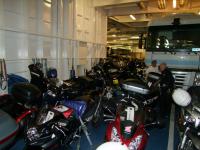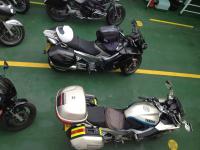mjs5761
Member
Let's not forget that taking the weight off the rear tire during winter months or during long periods between rides keeps the tire nice and round. It also significantly reduces the weight on the front tire at the same time. I always park the bike on the center stand in my garage.





















































